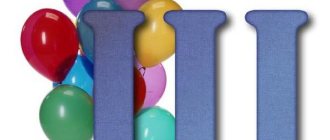Why do children growl badly?
The difficulty of reproducing sounds, including “r”, lies in their constant sonority.
In speech, it can be difficult for a child to cope with the connection of sonorants with each other, with vowels, with voiceless sounds, with hissing sounds. This is an articulatory problem (cannot pronounce sound combinations) and is most often overcome by training the tongue, cheeks, lips and palate. When a single “r” cannot be pronounced correctly, that is, growled, you need to understand the reasons.
They can be hidden both in the anatomy of the speech apparatus and in the general rates of psycho-speech development.
1. Anatomical features
- decreased tongue mobility;
- poor development of the muscles of the lips and cheeks;
- malocclusion;
- special structure of the frenulum (hyoid ligament).
Anatomical problems are solved by massage, articulation exercises, frenulum stretching or surgery. It is necessary to discuss the appropriateness of the latter with a speech therapist.
Children usually like articulation gymnastics. Because during such an activity, parents are forced to lift the ban on grimaces, sticking out their tongues and scary faces. Useful pranks with facial muscles help strengthen the articulatory apparatus, make it more mobile, and this will improve the clarity of speech in general.
2. Features of sound perception
If in a preschooler’s speech letters are constantly getting confused, rearranged, or falling out of words, phonemic hearing disorders can be suspected. On the other hand, the cause of pronunciation problems may be a banal imitation of one of the family members or older comrades.
3. ENT diseases
Sometimes the cause is improper breathing (weak breathing is more common in girls) or ENT diseases: allergic rhinitis, rhinitis, tonsillitis, tonsillitis, adenoids, polyps, paresis. In each case, a unique individual treatment and a set of speech therapy exercises must be selected to restore the function of the speech apparatus.
4. Dysarthria
Neurological disorders should be highlighted as a separate item. Not only the purity of diction, but also the very ability to pronounce sounds depends on the innervation of muscles and ligaments.
Reasons for violations
Why does a child have a problem with the pronunciation of R? There are several reasons, and to eliminate some of them you need the help of several specialists, not just a speech therapist:
- Anatomical features. These include a shortened hyoid frenulum, cleft lip, palate, and malocclusion.
- The air stream is not strong enough.
- Incorrect position of the organs of articulation - there are no anatomical disorders, but, for example, the tongue is in the wrong position because the child did not remember the correct articulation.
- Incorrect speech environment - often parents worry that if they burr, then their children will pronounce R incorrectly. This is not a genetic predisposition, but an incorrect speech environment. The child hears the incorrect pronunciation and tries to copy it. This is why rotacism arises.
- The child does not distinguish sounds by ear - this is a violation of the phonetic processes.
In addition, if there is a complex speech disorder - alalia, then incorrect sound pronunciation may be a consequence of insufficient activity of the speech areas of the brain. It is important to determine the exact cause of rhotacism and pararotacism in order to draw up a plan for corrective work.
How does a speech therapy session on sound production work [p]
Any adult will answer how to teach a child to pronounce the letter P - take him to a specialist. With the help of exercises, a speech therapist will be able to deliver correct speech.
Classes are held with the aim of preparing the oral cavity for correct tongue movements. The main tasks are considered:
- Show how sound should be formed correctly.
- Train articulatory motor skills.
- Learn to control air flow.
- Learn to go towards your goal.
For the lesson you will need a mirror to understand how gymnastics works, a ball, a machine, a frog with a tongue.
Sound making exercises for children:
- Animal repetition ball game.
- Broad smile.
- Moving the tongue up and down outside the mouth.
- Sticking your tongue out and in.
- Stick out your tongue and place it on your lower lip.
- Licking your lips.
- Blow without puffing out your cheeks.
- growl
- Rumble like a car.
After work, the child finds out what he needs to learn for the next lesson.
Thanks to gymnastics, the muscles of the mouth begin to function correctly
Sound making exercises for children
There are many techniques for improving sound pronunciation. If the baby is able to quickly master one exercise, then you need to move on to another. If the tasks turned out to be difficult, then they need to be spoken 7 times a day. You can recite tasks in different sequences so that your child doesn’t get bored.
The emotional state of the child at this time is very vulnerable. He needs to be supported for every success and not scolded for failures. There is no point in comparing your child with other peers. This can have a detrimental effect on the psyche and further development of the baby.
Exercises for producing sound in children:
- Touch the alveoli with your tongue and back.
- The tongue is on the alveoli, and you need to blow hard.
- Clatter like a horse.
- Stop the horse.
- Place your tongue on your lower lip as if on a plate. This exercise is best done in front of a mirror.
- Tap your tongue on the alveoli.
- Chatter like a magpie (trrrrrrrrrrr).
- Imitate a car engine.
- Place the tongue on the alveoli and speak sounds (dddd, dddddd, rrrrr).
Breathing training
The training should not tire the child. During gymnastics, exercises should help with the following:
- Arouse interest in classes.
- Develop speech prosody.
- Accelerate correct pronunciation.
Exercises:
- Blow on cotton wool, inflate a balloon or blow out a candle.
- Pronounce vowel compounds: “a-ua-uua-aaee-eeoo-ooiii.”
- Pronounce voiceless consonants.
- Pronounce voiced consonants.
- Inhale through the nose and exhale through the mouth for a minute while holding your breath.
- Exhale forcefully.
- Exhale while pronouncing the letter s.
Articulation gymnastics
Training articulatory muscles promotes constant speech in a person. Speech skills begin to develop from birth. Such gymnastics will help strengthen muscles and eliminate pronunciation difficulties at any year of life.
Training should take place in a playful way. Classes are held with interest, with colorful didactic material. Seeing himself in the mirror, the child is more willing to do the exercises. If the task cannot be completed, then the parent should use clean hands to help their child direct his tongue.
Note! To get started, 2 exercises are enough. With each lesson you can add one more
Exercises for muscles:
- Open your mouth wide and sit there for 10 seconds.
- Make lips like a duck’s and freeze.
- Turn your tongue in different directions.
- Puff out your cheeks and deflate.
- Pull your cheeks in and return to the opposite position.
If the tongue cannot perform actions, then you can help it with clean hands or foreign objects. The main thing is hygiene and monitoring the conduct of classes.
An exercise in which you need to reach your nose with your tongue
Staging technique
Correct sound production includes taking into account muscle tone, mobility, and articular readiness. Activities for sound production must be carried out comprehensively. By doing gymnastics, massage, speech exercises and motor skills development.
Speech gymnastics
Exercises during gymnastics affect the following:
Breath. Hearing. Attention. Voice timbre. Muscles of the oral cavity.
Note! They develop the connection between speech and movements, pronunciation. Exercises:
Exercises:
- Repeat speech commands with your voice and translate them into movement.
- Repeat tongue twisters after the speech therapist.
- Depict the wind.
- Speak with increasing volume.
- Pronounce syllables.
When to seek help from a speech therapist
You shouldn’t delay going to an appointment with a speech therapist. The sooner work on your baby’s speech begins, the faster he will learn to speak beautifully and clearly. It is necessary to consult a specialist in the following cases:
- At 3-4 years old, a child cannot stretch out his lips like a tube, puff out his cheeks, stick out his tongue, touch the palate with it, or reproduce the simplest rhythm.
- After 3.5 years, the baby skips syllables in words and confuses their places.
- At 4.5 - 5 years old, a preschooler does not speak in coherent phrases and confuses gender, number and case in sentences.
- The child speaks through his nose.
- He chokes on words, unable to keep up with his thoughts.
- The baby swallows the syllables.
- He doesn't have enough breath to pronounce the phrase.
- The child speaks monotonously.
- The preschooler does not strive to communicate and discuss what he saw, heard, etc.
- Homework on incorrect pronunciation of letters does not bring the expected effect.
- The child has congenital anomalies - cleft lip, short ligament on the tongue, decreased hearing, etc.
A child’s correct speech is not formed immediately. There are age standards that determine at what age a child should be able to pronounce a particular letter.
If a child cannot pronounce a certain letter correctly, parents can teach him at home.
Correct pronunciation requires trained muscles of the lips and tongue, as well as proper breathing. Articulation and breathing exercises, as well as games and tongue twisters to consolidate the acquired skill, will help teach your child to pronounce letters correctly.
It is imperative to encourage and praise your child for his successes. Seeing the support of adults and the effect of the work done, the child will enjoy the classes. And this is the key to a good result. This way the baby will learn to correctly pronounce even such complex letters as R, Ш, Ж, Л, С.
If you liked the article, please share a link to it
What prevents a child from pronouncing “r”
Hyoid frenulum (small membrane located under the tongue). By the age of six, the child’s tongue frenulum should stretch to 8 mm or more. If it is short, thick, and inactive, difficulties may arise with the sound “r”. In this case, you need to either try to stretch it with the help of special exercises, or trim it at the clinic.
Impaired sound pronunciation. A problem with earlier sounds (for example, a child confuses whistling and hissing sounds) may later result in a problem with the sound “r”. Most likely, the pronunciation of this sound will also be impaired.
If a child pronounces the sound “l” instead of the sound “r”, the situation is normal and can be easily corrected. These two sounds are similar in terms of the position of the tongue, but pronouncing “l” is easier, and the child, hearing “r” in someone else’s speech and trying to repeat it, chooses the simplest method. If a child replaces the sound “r” with other sounds, the situation is more complicated, but in this case we can say that he hears it.
If a child misses a sound or swallows, it can be assumed that phonemic perception of sound is impaired.
Phonemic hearing impairment. The hearing aid cannot perceive all speech, but only individual sounds. In this case, we are talking about a violation of phonemic hearing, which manifests itself in the form of problems with distinguishing sounds.
The peak development of phonemic hearing occurs at the age of 4-5 years. But even before this age, you can notice that the child hears differently. When pronouncing words, he makes substitutions of sounds or skips individual sounds.
Signs of phonemic hearing impairment are a serious reason to take your child to a speech therapist. The cause of impaired phonemic hearing may be damage to the central nervous system, or it may be ordinary adenoids or previous otitis media.
Tone of the articulatory apparatus (tongue, cheeks, lips). Skipping sounds may also indicate insufficient development of speech muscles. A child’s speech muscles may be either insufficiently mobile (hypotonicity) or too tense (hypertonicity). In both cases, sound pronunciation suffers.
Behavioral problems. As we have already said, mastering the sound “r” requires the greatest effort from the child. Making the “r” sound is especially difficult for children with behavioral disorders such as attention deficit hyperactivity disorder (ADHD). No less problems with learning pronunciation arise in tonically relaxed children.
Throat "r". If a child has developed according to norms, hears all sounds and the process of mastering speech has not caused him any problems, he does not have the habit of working on acquiring speech skills. In this case, when trying to reproduce the sound “r”, he can take the path of least resistance and replace the difficult to pronounce “r” with a simpler option, namely the laryngeal “r” (in this case, the vibration occurs due to the laryngeal uvula).
Correcting the “r” in the throat is very difficult, since in this case relearning is required. In this case, you definitely need to contact a speech therapist. The situation is further complicated by the fact that many parents simply cannot distinguish the “r” in the throat from the “r” in the tongue.
In all these cases, the most important thing is to correctly determine for what reason the child cannot independently cope with the sound “r”. And the best solution is to contact a speech therapist
A qualified speech therapist will check the frenulum and tone, phonemic hearing, determine the throat “r” (if it is present) and, if necessary, draw up a correction route. If correctional assistance is not needed, you can try to develop the “r” sound yourself.
When correction is needed
The sound “R” is one of the most difficult sounds in a child’s speech development. It belongs to the category of sonorants, in which there are more vocal tones than noise.
Experts put “P” last, when all other sounds have already been correctly formed and consolidated. The production of “R” begins after 5.5-6 years. Until this time, a violation in his pronunciation is the age norm.
In some cases, it is worth contacting a speech therapist from the age of 4, when “R” appears in speech, but does not manifest itself correctly. In this variant, the child does not replace “R” with other sounds (“L”, “V”), but tries to pronounce “R”, but with disturbances in the articulatory apparatus.
Norm for pronunciation of “R”:
- lips are relaxed;
- distance between teeth 4-5 mm;
- the tip of the tongue rises to the upper gums;
- the tongue vibrates in the air stream;
- the middle part of the back of the tongue arches;
- the back of the tongue is directed back, pressed against the palate;
- the side edges are pressed upward;
- The vocal folds vibrate when speaking.
Violation of the pronunciation of hard “P” and soft “Pb” in defectology is called rhotacism or pararotacism. In Soviet times, these violations were called burrs.
The main types of rhotacism that require correction:
- Velar. The tip of the tongue is lowered down and does not participate in articulation. The tongue is tense and pushed back. There is little voice in pronunciation, a lot of air. The sound is guttural and loud.
- Uvular. The tongue vibrates in the air stream. The sound is soft, quiet, smooth.
- Nasal. The air is directed into the nose, there is no vibration.
- Bilabial. Only the lips, without the tongue, take part in articulation.
- Slotted. The tongue is directed upward and forms a gap with the soft palate. The sound changes to “Z” or “Zh”.
- Interdental. The tongue is between the teeth.
Stages of correction of violations:
- Preparatory.
- Sound production.
- Automation.
- Differentiation.
- Consolidation in speech.
How to teach a child to pronounce the letter “R” - video
More effective exercises can be seen in the specially designed course of speech therapy classes “Growl Now”.
A few more recommendations
- Do you dream of teaching your child to skate? Practical tips will help your child quickly master this difficult and useful skill.
- Also, using our recommendations, you can teach your child to read English quite easily.
- Parents of first-graders often worry about how to prepare their child for school. This article will give you a clear understanding of which preparation methods to choose for the most effective training of a preschooler.
- Do you want to teach your child to read, but don't know where to start? Be sure to use this article and you will easily cope with this difficult task.
General tips for organizing home activities
For classes to be effective, the following recommendations must be followed:
- Exercise regularly (daily if possible). Infrequent training will not produce any effect.
- The sequence of tasks is important: from simple to more complex (first, to reinforce pronunciation, give the child individual words, and then complex tongue twisters and rhymes).
- To practice sound, you should use a variety of materials, constantly coming up with something new to interest the child.
- During the lesson, the positive attitude of the child himself is very important: if at the moment he is in a bad mood or not feeling very well, it is better to postpone the training, for example, until the evening.
- Do not show your child that incorrect pronunciation of R is a serious problem. Let him perceive the speech therapy session as a game.
For the success of the lesson, the child’s positive attitude is very important, and the training should be presented as an exciting game.
Stages of formation of correct sound pronunciation
The formation of correct pronunciation occurs in stages, from simple to complex. Conventionally, correctional work can be divided into three stages:
- Sound production (correct position of articulation organs, pronunciation in an isolated state).
- Automation (correct reproduction of syllables, words, sentences).
- Differentiation (difference between similar sounds by ear, in this case hissing Zh-Sh).
Specialists use various methods and techniques. During work at the first stage, the speech therapist uses massage and staging probes in his work. The former help to relax or tone weak muscles, the latter fix the organs of the articulatory apparatus in the correct position. The speech therapist begins each lesson with articulation gymnastics.
In the initial stages, a mirror is used. This allows the child to correctly correlate his actions with an adult and see whether he correctly repeats after the speech therapist. If it is difficult for a child to hold his tongue in one position or another, at first the teacher helps him with the help of probes. However, there are children who perceive these devices fearfully, as they associate them with medical devices. In this case, you can use disposable cotton swabs; they are safe and easy to use.
Exercises for the tongue when making the sound Z may include the following exercises:
- “Pancake”: the exercise is recommended especially for those children who have increased muscle tone in the articulatory apparatus. Correct execution involves keeping the tongue in a relaxed state: the mouth is open, the tongue is wide, resting on the lower lip, while the upper teeth are visible. You need to stay in this position for 5-10 seconds.
- “Pipe”: this articulation exercise is necessary to develop the correct position of the lips when pronouncing the sound Zh, it tones the weak muscles around the mouth.
- “Delicious jam”: the tip of the tongue should be wide, the child needs to lick first the lower lip, then the upper. It is advisable to have dry wipes on hand to wipe your mouth.
- “Cup”: the sides of the tongue rest against the molars. If it is difficult to hold the tongue in this position, at first you can ask him to “wrap the filling in a pancake” (the speech therapist presses the middle part of the tongue with a cotton swab or probe, which helps the baby lift its sides).
With buccal pronunciation, in order to develop proper breathing, strength and direction of the air stream, the child is offered tasks from a set of breathing exercises. For example, you can blow a cotton ball off your palm.
The sound Zh can be “put” from the sounds Sh, Z or R, provided that at least one of them is pronounced by the child correctly. In the group of hissing sounds, the main one is Ш, most often it is from him that the pairing of the Zh begins. These sounds have the same articulatory position, therefore, if both of them are violated, the Sh is placed first, then with the addition of a voice – Zh.
1. Articulatory setting from the sound R.
The speech therapist asks to pronounce the syllable “ra”. When the child speaks, using a staging probe, the teacher stops the vibrational movements characteristic of the sound R. Instead, “zh” will be heard. Then he repeats it several more times, after which the child tries to pronounce the syllable “zha” independently.
2. Setting Z from the sound Z.
The child pronounces the syllable “for” in an extended manner. At this moment, the specialist carefully changes the position of the tongue, using a probe to lift its tip to the palate by the front upper teeth.
3. Formation of the correct position of W from W.
In this case, probes and other placement devices will not be needed. The main thing is to help the child understand that it is necessary to use his voice. To do this, the speech therapist asks you to place your palms on your throat so that vibration is felt when the vocal cords are tense. Then he offers to try to pronounce the sound Sh as loudly as possible. When the ligaments work, the result will be Zh.
Finger gymnastics are widely used. Also, a speech therapist can suggest that the child wind a thread onto a ball and pronounce a syllable, a word with a sound that needs to be automated, for each skein. In group work to consolidate correct pronunciation in backward and forward syllables, you can use a ball.
Differentiation of sounds occurs when learning (reading) tongue twisters, tongue twisters, proverbs and sayings containing consonant words, for example, “fire - bazaar, sting - hall.” At the initial stage, pictures are used to accompany words.
Levina's method
Speech therapist R. E. Levina in 1965 developed a set of articulation exercises for teaching the pronunciation of “R”.
At the first stage, the exercises are aimed at obtaining the fricative "P" without vibration after achieving correct articulation.
On the second stage, the vibration of the tongue from the sounds “Ш”, “Ф” is trained. The child parts his lips without rounding them, extends the “F”, moves the tip of his tongue upward to the gums, there is no gap between them. The child exhales forcefully.
To generate vibration, use the sound “D”, which is pronounced in one exhalation. The mouth is wide open, the front edge of the tongue is tightly connected to the gums of the upper teeth. “D” is pronounced instead of “R” in words with the combination “TR” or “DR”.
Starting with the letter R
The letter P is considered the most difficult to pronounce. Many preschoolers can growl like animals, but not everyone makes the sound P sound clearly. There is a whole list of exercises for practicing at home and better assimilation of sound:
- exercise “motor” - you need to ask the child to growl like a little motor for a few seconds;
- hide and seek or where the sound R is hidden - pronounce the words and clap at the moment when the child hears the sound R, after which the word is pronounced together;
- “Growl” game - show a picture of predatory animals so that the child utters a corresponding growl;
- game “ringing tracks” - together with the children, come up with chants with the sound R and syllables (for example, ra-ra-ra-ra - we were driven out of the yard; ro-ro-ro-ro - we quickly found a bucket; ru-ru- ru-ru - I am a cheerful kangaroo, etc.);
- substitute the correct syllable - you need to pronounce the word, excluding syllables with the sound P, and children need to pronounce the appropriate syllable.
A speech therapy course for mastering the syllable P includes mandatory reading, frequent pronouncing of words and tongue twisters with complex sounds, and learning poems by heart.
Speech therapist and kindergarten
If kindergarten teachers or a primary school teacher notice a child’s diction, insufficient clarity of speech, or peculiarities of sound perception, do not neglect organized additional classes within the educational institution. In a separately formed group, where all children have speech disabilities, it is much more comfortable for them to study without embarrassment and fear of making mistakes.
The speech therapy lesson is structured so that every child takes maximum participation in it. Usually, at every stage from the organizational moment to physical education, a full-time speech therapist uses special games and exercises that help children relax and learn to speak in a new way.
Improvement in diction in a healthy and normally physically developed child occurs after the first lessons. But you need to teach him not only to mechanically reproduce sounds, but also to understand the meanings of words, to sense the difference in meaning. This will speed up and enrich the learning process.
Sound production and automation
With the help of exercises, the correct articulation of the sound “sh” is developed. But skill is a mechanical process that requires practice. It will take time to consolidate. It happens that during a lesson, pronunciation improves, but by the next session it again turns into a lisp or whistling. To prevent the opposite effect from appearing, constant supervision of the skill plays an important role:
Gently and jokingly remind the student that he needs to watch his tongue. Control your own pronunciation. Pay attention to the phonemic errors of others and ask your child to pronounce sounds correctly every time. If he is already a schoolchild, let him read aloud with the correct pronunciation. Try to use a new skill more often
Try to use a new skill more often.
For example, ask questions, the answer to which will be words or sentences with the sound “sh”, learn corrective nursery rhymes instead of regular poems. Pure twisters and tongue twisters in daily household chores starting with “sh” will help you quickly automate the sound:
- We'll knit a hat for the baby, shu-shu-shu, shu-shu-shu.
- We dress the baby, sha-sha-sha, sha-sha-sha.
- Collect your pencils, shi-shi-shi-shi-shi-shi.
- Children love fairy tales, sha-shu-shi, sha-shu-shi.
You can come up with any simple rhymes and combinations, or your own rhyme. Give one of your favorite toys a special name that will help your child master the sound: “Little Bunny”, “Wolf-Tail”.
Use this name daily in familiar situations to continually refer to the skill.
It is important that the parent himself does not feel awkward when using speech therapy techniques. Try to hiss yourself as sincerely as possible.
When activities become familiar, add similar sounds to them: “zh”, “ch”, “sch”. Teach your child to distinguish them articularly. This will help you at the same time put in all the difficult sounds and master the Russian alphabet. Pictures and instructions can now be purchased at any bookstore.
Sound differentiation
In order for [p] not to conflict with other consonants, especially sonorous ones, it is necessary to automate not only the difficult sound, but also its combinations with others. So, to differentiate “r”, words that differ by one letter are used. Pairs of words suitable for differentiating “r”:
- Rye is a lie
- Varnish - cancer
- Laz - once.
During the day, diction exercises should take about 20-30 minutes. It is more effective when this time is divided into short episodes, games, entertaining tasks of 5-7 minutes. For a child from 3 to 7 years old, it is much more interesting to play and communicate with adults than to perform meaningless repetitions, so give preference to play methods. Children's poems, a comic rhyme and a logarithmic song on the topic of the lesson are also suitable.
Advice. Play metagrams : how, for example, can you make a sea out of a river? Very simple: [river]ka - [hand]ka - bow - puddle - bed - vine - pose - along [ra] - mountain [ra] - mountain [re] - sea [re]. At the same time, you can count within ten: how many steps did it take for the transformation? How many attempts did it take to find the chain?
Incorrect sound pronunciation must be corrected and correct pronunciation must be corrected soon, but not quickly. If you intend to correct your child’s speech on your own, then act consistently and methodically. In order not to get lost in the modern flow of information, at each stage, check the recommendations of trusted sources: consultation with a speech therapist, specialized literature or official publications of child psychologists.
Try to choose the right time for the lesson - when the child is in a good mood and ready to cooperate in the game. It is better to talk with him about sounds while studying books and fairy tales, exercises with cubes, a box of letters and the alphabet. Explain that the tongue should be taught to work, like any other muscle, without stopping training, as in sports. The fact that the tongue is a muscle can be a big discovery for some reason!
If it doesn't work out. Preschool children are not always amenable to learning and training. When something goes wrong, parents should not panic or become nervous in front of their children. Stop the activity, calm down and return to your beloved cub in a good mood.
Another important piece of advice: eliminate a bad example or draw the child’s attention to the fact that imitating such an example is bad. Sometimes children stop burring when they realize that it causes ridicule and excessive attention.
Important! Is it worth instilling in a child a sense of shame for his mistakes? Of course not! Instead of making a remark like “You’re wrong again,” turn the situation into a joke. Many phrases are remembered by the whole family and turn into fun memories. Here are examples from recent practice: coach Vareny Nikanaevich (Valery Nikolaevich), grandfather Usran (Ruslan).
How to teach a child to pronounce the letter [Zh]
Let's consider the main ways of forming the sound Ж in children, depending on the disorder:
- Setting sound when skipped. Sound may be lost in speech. Parents do not hear sound where it should be. In this case, you can teach a child to pronounce F by imitation. Ask him to sing the “Bug song” and pronounce the sound Zh after you for a long time. If the child has intact phonemic hearing, it will not be difficult to pronounce the letter Zh.
- Sound production during replacement and mixing (parasigmatism). In this case, the sound is replaced with simpler ones in articulation: , . This defect is easily perceived by ear. Sound production should begin with articulatory gymnastics.
Invite your baby to do tongue exercises for 5-10 minutes every day. The complex for hissing sounds consists of three main exercises and will allow you to form the correct articulatory pattern:
- “Cup”. Ask your child to place the tongue behind his upper teeth and hold for five seconds. A break is taken between exercises so that the tone of the tongue muscles is restored.
- “Tube.” Show your child how to stretch out his lips with a straw. Elongated lips should be held for five seconds.
- “Painter.” A complex exercise that is carried out after successfully mastering the “cup”. The tip of the tongue strokes the hard palate, like a painter paints the ceiling with a roller.
All exercises are carried out in front of a mirror, the child must see himself
During gymnastics, you need to praise your child for the slightest result and try not to pay attention to failures. Parents should not hope for a quick positive result, because producing sounds is a long, painstaking work
It is important to remember that when pronouncing a sound, a strong air stream is necessary. Here, parents will be helped by a variety of toys: harmonicas, paper pinwheels and everything else that you can blow on
The child should be helped to learn to exhale forcefully through the mouth. As you exhale, ask the child to make the sound. Sound distortion (sigmatism) is a complex disorder. In this case, there is a distorted pronunciation of the sound: interdental, lateral, nasal. The correct sound pattern is not formed. The tongue occupies a position either between the teeth, behind the lower teeth, or near the soft palate.
To correct the defect, you must contact a specialist and attend special classes. In this case, it is recommended to carry out the complex of articulatory gymnastics presented earlier, as well as to develop the child’s phonemic hearing.
There are a number of games to develop phonemic awareness. It is necessary to start classes with simple games to distinguish non-speech sounds. Here various sounding toys will come to the rescue: boubouin, drum, bell, squeaker. Invite your baby to listen to how each toy sounds, and then choose one and, hiding it behind his back, make a sound to it.
The child must guess which toy was playing now. Jars of cereal can serve as toys, since small and large grains rustle differently in the jar. Next, you can move on to forming the perception of speech sounds. The child should be taught to distinguish sounds from similar-sounding phonemes.
The game “Catch the Sound” will help parents with this. Invite the child to clap his hands when he hears the sound among other sounds: Ш, Ж, Х, Х, ШЧ, Ж, Ф. Next, the game can be complicated and asked to find a syllable with the letter Ж: SHI, ZHA, HO, SHU, ZHE, SHA, CHI, ZHU. And also an option with words and sentences.
- After successful training, you should consolidate the result and move on to the automation stage. It is necessary to control the child’s speech and encourage correct pronunciation not only in speech therapist classes, but also at home. In the first stages, exaggerated pronunciation of the sound is possible, but this is not a problem. The articulatory apparatus gets used to the new way of life, which takes time.
Tips for parents when setting up sound:
It is necessary to monitor the baby’s speech development
Early detection of violations facilitates quick and correct correction. For complex forms of the disorder, you should seek the help of a speech therapist. It is necessary to follow the recommendations of the speech therapist, this will contribute to the success of the correction. It is important to talk with the child and stimulate the baby’s speech activity. Praise your child for the slightest progress in development.
It is important to know that love, attention and care for a child are the key to success in the development of the baby!
Duration of correctional work
How long does it take to develop the correct pronunciation of the sound R? In modern speech therapy there are no clear time boundaries. This applies to working with any group of sounds. It all depends on the individual characteristics of the child. You can install sound already in the first lessons (if preparatory work has been done), but the automation stage can take quite a long time.
The sound R is complex in articulation, which is why it appears in speech at an older age. There is no need to rush into automation; your task is to achieve clear sound and stable vibration. The tongue should not “slip” when the child pronounces words. To make it interesting for him, use didactic games, and not just verbal and visual material.
You can look for a specific speech therapy technique, but they are all built on the principles and practical tips outlined above. The main condition for successful correctional work is diagnosis and correctional work taking into account the individual characteristics of the child.
Exercises
- "Motor". The purpose of this exercise is to reproduce the sound of a motor, which resembles the sound of p. The child is asked to press his tongue to the upper palate and place his finger under it. You can also use a cotton swab. The baby is asked to exhale forcefully, while pronouncing a drawn-out “d”. At the same time, it is necessary to make an oscillatory movement with a cotton swab or the child’s finger from side to side. If everything is done correctly, you will hear vibration and a sound similar to r. This will indicate that the engine has been started.
- "Painter". The name of the exercises stems from the fact that the child must move his tongue along the inside of the mouth, as if painting the walls of the teeth, cheeks, and palate. This exercise needs to be done back and forth.
- "Mushroom". The tongue, holding the central position, should touch the sky and hold for 10 seconds. This exercise received this name due to the fact that the frenulum, which will currently be stretched under the tongue, is similar to a mushroom stalk.
- Invite your child to roar and let him imitate a tiger. This exercise can be done together with your baby - he will be a little tiger cub, and you will be an adult animal.
For stretching the frenulum
It is important to complete each task without haste while opening your mouth wide. Parents should understand that gymnastics for speech development puts a serious strain on the baby’s tongue, which is why it is so important to take a break from time to time
"Football". The baby should take turns touching the left and right cheeks, simulating rolling a ball in the mouth. "Swing". Ask the child to open his mouth as wide as possible, and now let him move his tongue down and up, touching his teeth. After several repetitions, you need to stop the tongue from above in the oral cavity and hold it for 15 seconds. “Reach up to the chin.” The child's task is to try to extend his tongue so that it is directed towards the chin, try to reach it. "Kitty". To perform this exercise, parents must pour some kind of treat into the container. The child's task is to lick it, copying the actions of the kitten. “We reach for the nose.” Let the little one open his mouth and smile; his task is to try to reach his nose with the wide tip of his tongue, and then lower it, touching his upper lip
It is important that the jaw remains motionless and the tongue does not narrow.
If there is insufficient air flow force
- Rolling balls. Let the baby puff out his cheeks and try to roll the accumulated air from one side to the other, from cheek to cheek.
- Inflate the ball. Let your baby try to inflate both cheeks, holding the air as long as possible.
- Groove. The child’s task is to place the straightened tongue on the lower lip, and then slightly curl the edges, which will allow the formation of a groove. Now let it blow through it.
- The following exercises are also effective:
- you can tie a piece of cotton wool to a thread, let the baby blow on it, while the mother holds the cotton wool;
- place a pencil on the table in front of the child, let the child try to move it with the force of his breathing;
- blowing soap bubbles;
- You can blow on a dandelion.
When weak tongue muscles
- To strengthen the muscular system of the tongue, exercises that allow it to move up and down are suitable.
- "Turkey". The child is asked to open his mouth slightly. Now it is necessary for the baby to gently run his tongue back and forth across his upper lip. At the same time, he should try to say “bl” five times in a row, increasing the tempo all the time.
- "Horse". The baby should imitate the clicking sound of a horse by flicking its tongue against the roof of the mouth.
Preparation of the articulatory apparatus
In correctional classes, the preparatory stage is devoted to working with the articulatory apparatus. Exercises are performed to stretch the hyoid ligament, lift the tongue upward, and warm up the lips and jaw.
Tasks for preparing the articulatory apparatus for work:
- “Swing” - open your mouth, stretch your tongue alternately to your nose and chin.
- “Horse” - click your tongue slowly and forcefully, imitating the sound of a horse’s hooves, while the lower jaw remains motionless.
- “Chatter” - use the wide tip of your tongue to run back and forth along your upper lip, without lifting your tongue. Simultaneously say “BL-BL-BL”.
Mispronunciation options
You can not pronounce R in different ways:
- A common option is when the sound is simply thrown out, for example, the baby says “yba” instead of “fish”.
- P can be replaced with sounds that are easier to pronounce: L, Y, V, Y, G.
- A child may pronounce P in a way that is uncharacteristic for the Russian language, for example, by grazing (in a throaty way) or as in English. This happens especially often in bilinguals who have spoken two languages since childhood, in one of which the sound R is pronounced “not in Russian.”
- Sometimes children pronounce this sound alone normally, but have difficulty pronouncing words or syllables.
What specialist help may be needed?
If the cause of a speech defect in a child is a shortened hyoid frenulum, then consultation with a surgeon may be required. But in modern speech therapy they solve this problem with the help of exercises. And only those who have a too short frenulum need the help of a surgeon. This defect makes it difficult to raise the tongue, which is the basis for the pronunciation of R.
If your bite is incorrect, your speech therapist may advise you to see an orthodontist. If there is a complex speech disorder (dysarthria, alalia), to activate speech processes you need a special course of treatment, which is selected by a neurologist. As well as a consultation with a defectologist who can draw up a plan for corrective work on the development of the emotional-volitional sphere.
How to teach correctly. Speech therapist advice
So, how to quickly teach a child to say the letter “r”?
Parents do not always have the opportunity to show their child to a speech therapist, and often finding a free speech therapist who can work with the child is not so easy.
If the baby pronounces other sounds well and only “r” remains problematic, then you can try to create the sound by practicing yourself.
In order to successfully develop the baby’s speech apparatus, speech therapists recommend adhering to the following rules:
- You need to master the letter gradually. First, we teach how to pronounce the syllables correctly: ar, ra, op, ro and so on. After this, you can master complex tongue twisters.
- Try to interest the child. Gymnastics must be done in a playful way. The exercises should captivate the baby so that he does them with pleasure.
- Classes must be held regularly. Several lessons may not be enough to produce the “r” sound. It is necessary to do gymnastics every day.
Often they start teaching a child tongue twisters to make a certain sound. This is not true. First you need to master the sound separately.
After this, achieve the correct pronunciation of simple syllables with this sound. Then we fix the sound in the pronunciation of short, easy words. And only after this we begin to memorize tongue twisters to develop automaticity when pronouncing the sound “r”.
Bogomolova method
A.I. Bogomolova in 1979 proposed a method for generating vibration for saying “R”. The teeth are open to a distance of 2 fingers. The tongue is pressed against the palate, stretching the frenulum as much as possible. The teacher moves the edges of the tongue towards the palate with his fingers, while the frenulum is free.
The child takes a deep breath and blows it out sharply, using his voice. The combination “TZ” is formed. Repeat the exercise, gradually increasing the air pressure. The sound combination “TLE” will change to “TR”. After fixing the short “TR”, they practice the rolling “TR” with the help of fingers, and then without them.
Sound Automation
In order to put the sound “r” and consolidate your achievement, perform exercises to automate the sound: learn and pronounce tongue twisters, rhymes, and tongue twisters.
The production of the soft sound “r” is done after the pronunciation of the hard “r” is fixed.
Exercises for pronouncing the letter “r” in this case are pure phrases with a soft “r”:
Tongue twisters are great for putting a soft “r”
Various tongue twisters and nursery rhymes will become additional practice and will help the child consolidate the acquired skills in pronouncing the letter R. They will also develop general articulation, besides, this funny type of repetition always gives children great pleasure and charges them with a positive attitude.
Exercises with tongue twisters can be carried out in the form of competitions between the baby and other family members, regardless of how old someone is. Examples of tongue twisters:
Speech exercises
For the development of the speech apparatus, general language gymnastics is necessary. It must take place in a playful way. 3-4 times a day for 10-15 minutes. The baby needs to be interested so that he has a desire to do this gymnastics. How to do this is the concern of each parent individually.
So, let's look at an approximate set of exercises.
- Exercise 1: play a game with your child to see who can reach the tip of their nose with their tongue
- Exercise 2: roll your tongue into a tube, stick it out of your mouth and blow into your tongue
- Exercise 3: use the tip of your tongue to reach your upper teeth and say the letter “d”
- Exercise 4: play around with your tongue, stick it out of your mouth and swing it in one direction and the other.
- Exercise 5: tell your baby that your tongue is a toothbrush, and you need to brush all your teeth with it on all sides.
In addition to these exercises, parents can come up with others, the main thing is that they are done in a playful way and the child likes them.
Do not require your child to immediately pronounce words with the letter r. Start with simple ones, gradually moving to more complex ones. Try to show him how to growl first, and let him repeat it. Then, if you already get a single letter “r”, practice saying syllables with this letter “ra, ro, ri, re, rya, ru”. And after syllables have begun to form, you can move on to words with the letter “r”.
Don’t forget that an important point when working with children is psychological. A 5-year-old child is already big and notices his defect himself; it is possible that his peers constantly tell him about it. Therefore, the main thing is not to “overdo it”. During classes, encourage the child and praise him.
Note to parents. Don’t despair, if you have confidence in your abilities, in the abilities of your baby, then he will try and everything will work out for him.









